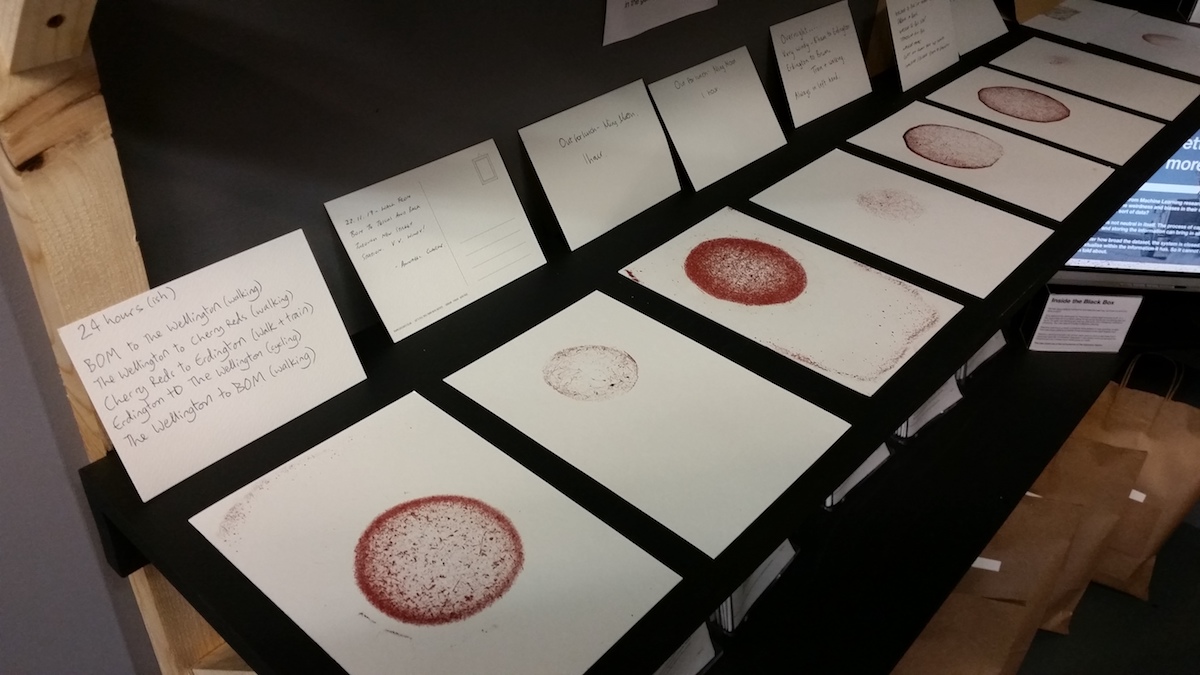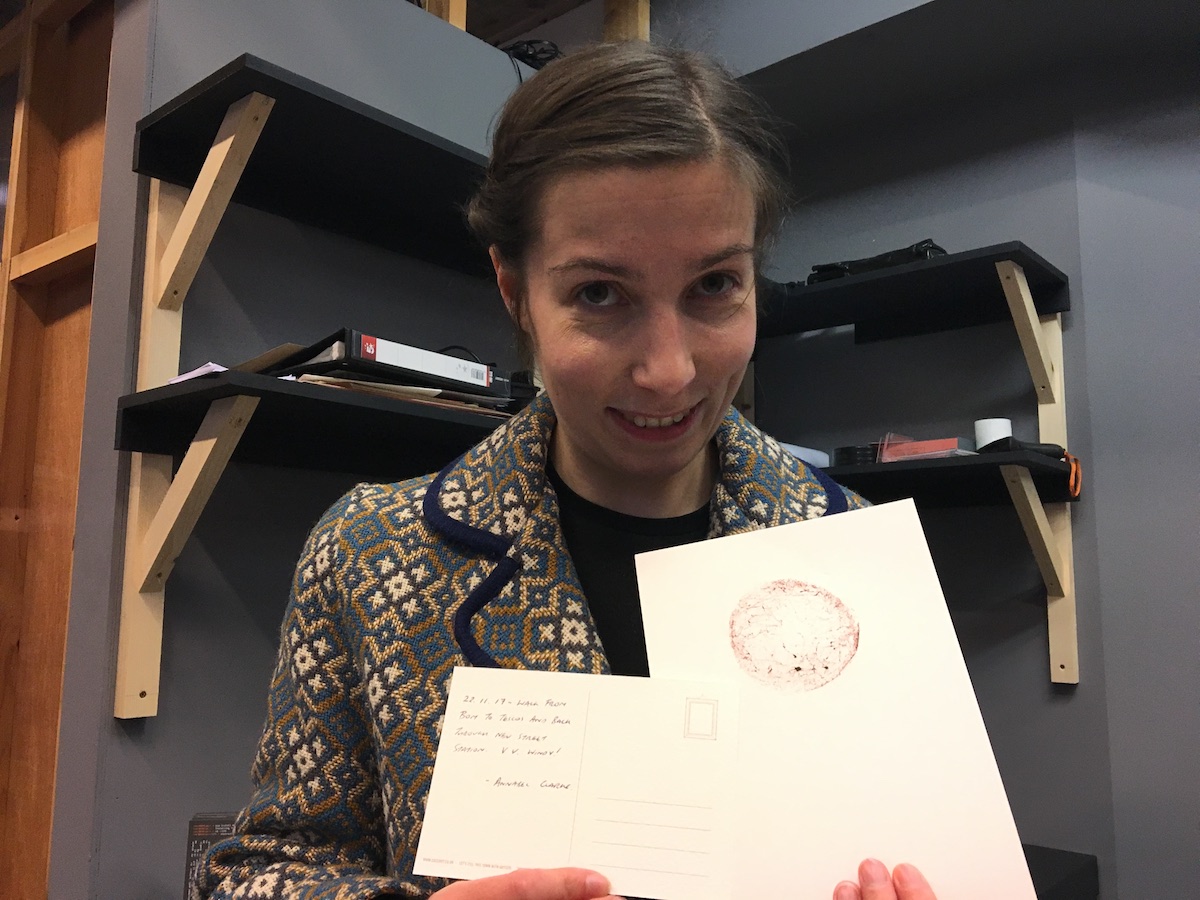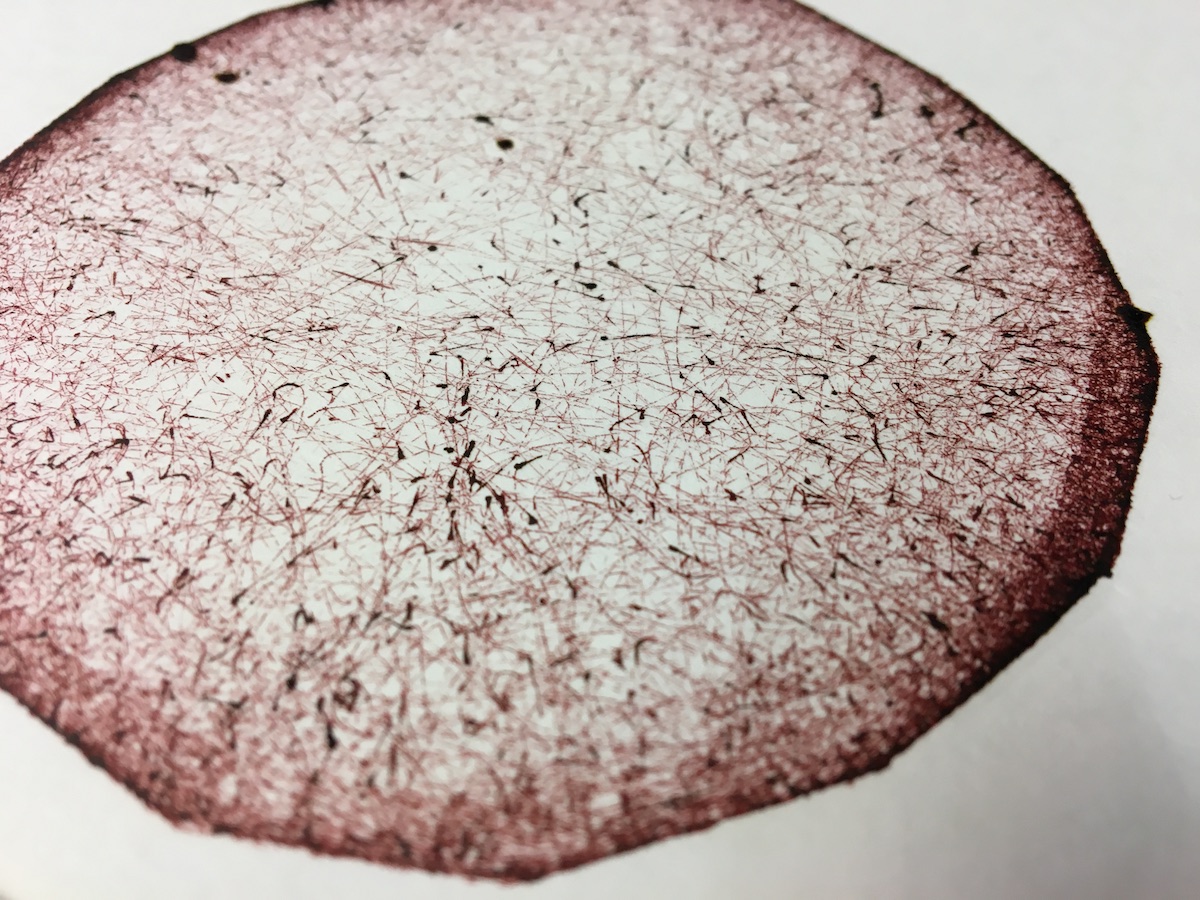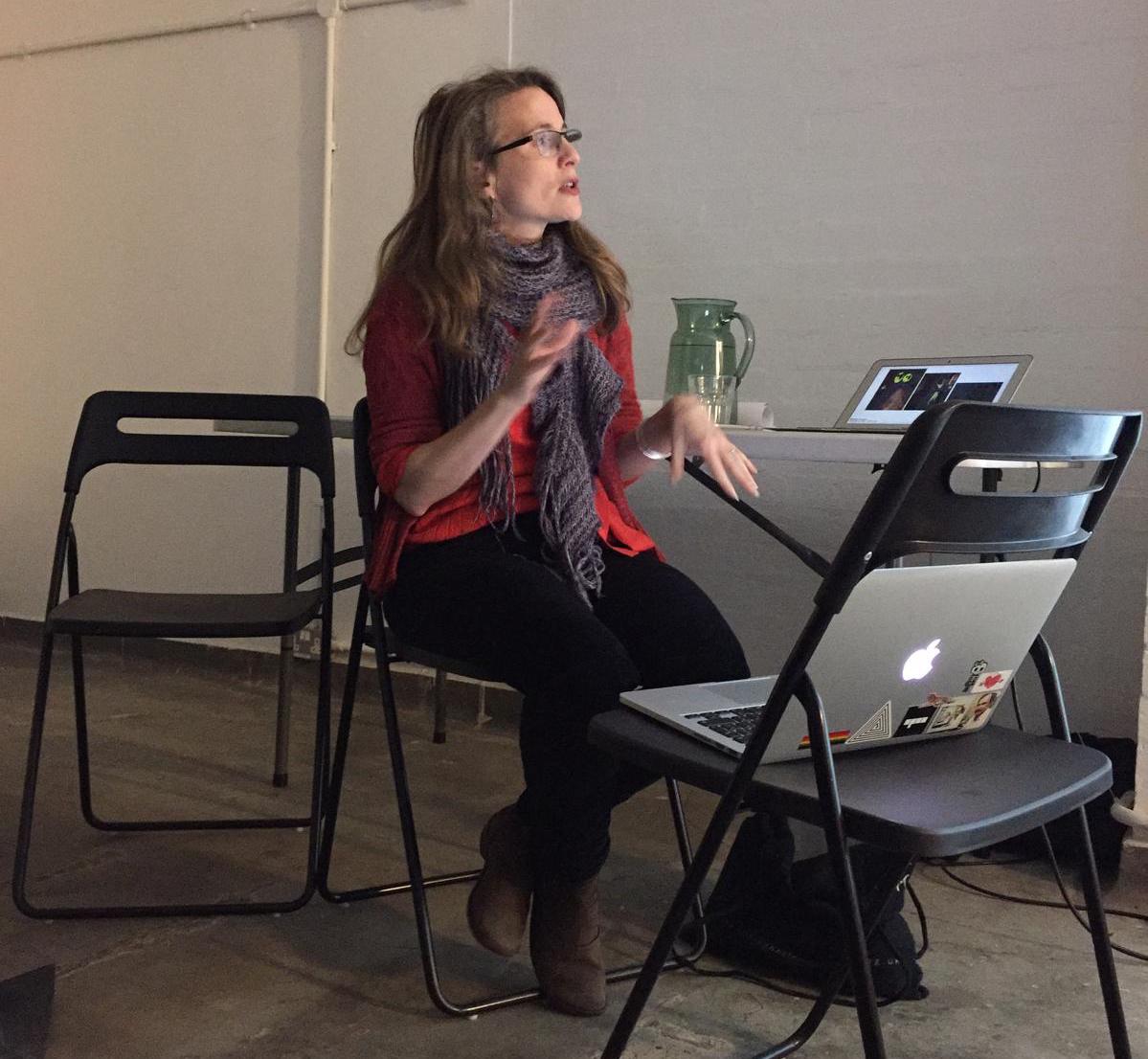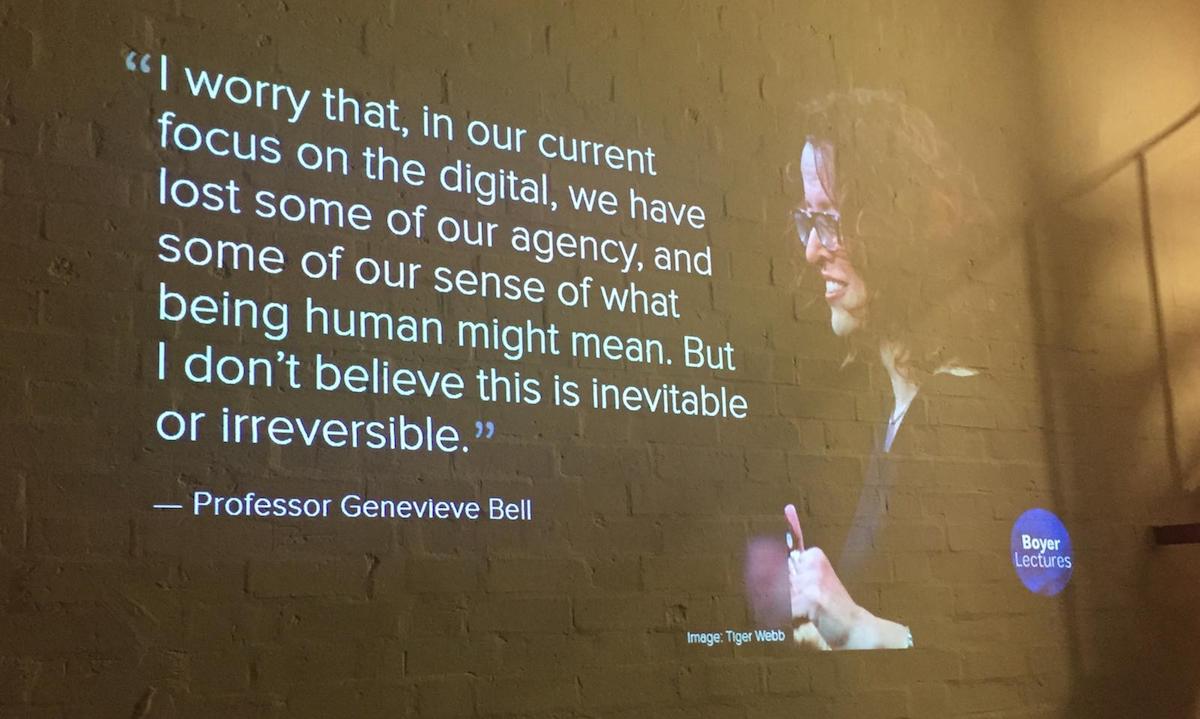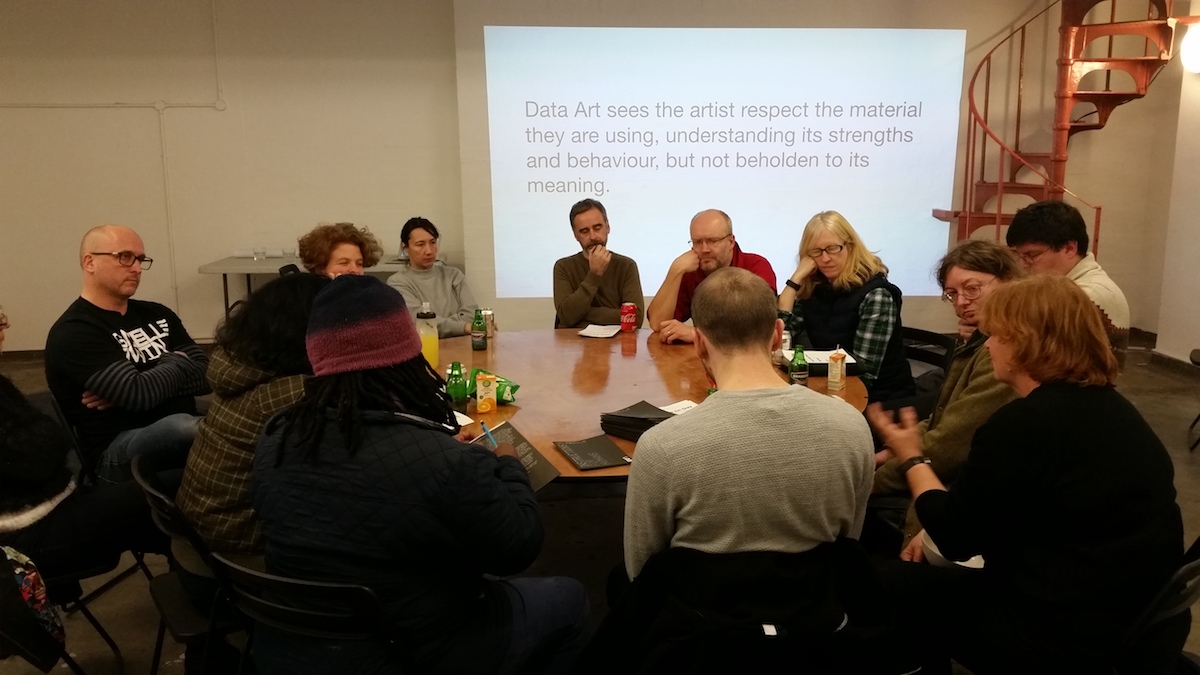This website has been archived and is longer updated. For more about this project, see art.peteashton.com/instructions-for-humans.
Data Art Day
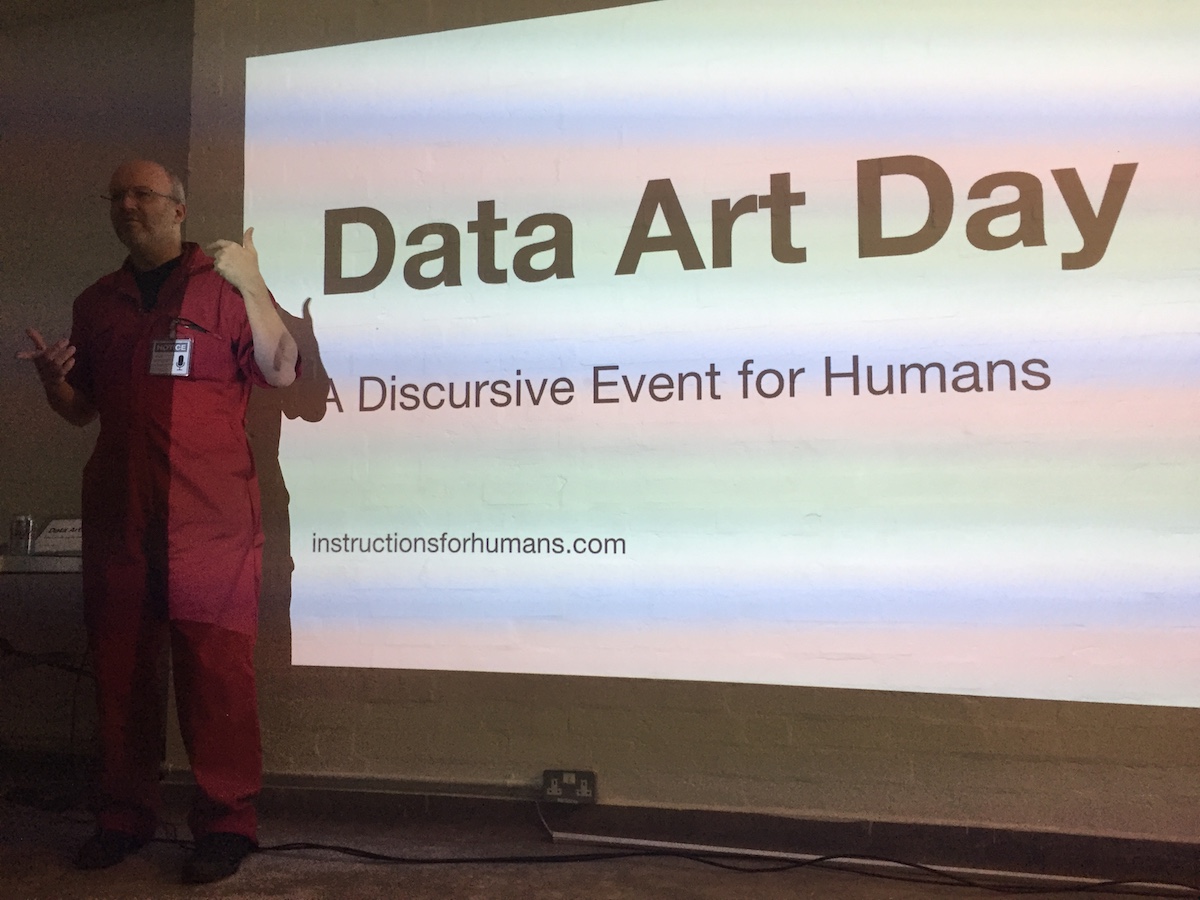
Saturday 25th November saw three guests joining me in the BOM gallery to share their work and ideas about using data in art.
This event was not about computers or programming. It was about the practice of using information in all art forms. I was particularly interested in those who do not consider themselves “digital” attending.
- 2-5pm: Guests from a range of art backgrounds were in the gallery talking about their work and the work that inspires them.
- 5-7pm: A semi-formal gathering with snacks and drinks in the basement for artists and practitioners who use information in their work.
What is Data Art?
Data Art is distinct from Dataviz, which is a completely different approach.
Data Art does not have to use computers or code. It is made with information that is recorded over time.
Data Art uses information as a material which can be shaped and formed as a sculptor might shape and form clay.
Data Art sees the artist respect the material they are using, understanding its strengths and behaviour, but not beholden to its meaning.
Data Art uses information to tell a new story about the world, not simply record what has happened.
Data Art treats photos not as documentation but as raw material for new adventures.
To help me tease this idea into something coherent, I was joined by three guests. From left to right…

Hannah Redler Hawes is an independent curator representing Data as Culture, the art programme for the Open Data Institute. She was previously Head of Arts Programme at the London Science Museum.
Nikki Pugh is an artist whose work is centred around interactions between people and place: often using tools and strategies from areas such as pervasive games and physical computing to set up frameworks for exploration. Her work Colony uses GPS data as an art material and she brought Orrery for Landscape, Sinew and Serendipity to the gallery.
Kruse is an artist whose Drawing Apparatus were available to borrow during the week. Her practice is primarily concerned with drawing and has included video, sound, sculpture and performance. She is currently developing a new body of work that explores the role of information and data in autistic experience and culture, using lo-fi and digital drawing methods.
Pete Ashton is myself and I brielfy framed the talks using Data Cult where I worked with two performance artists to make work about data tracking technology.
(My interest in data as an art material first crystallised at a talk by Julie Freeman and her co-authored paper A Concise Taxonomy for Describing Data as an Art Material. Thanks Julie!)
Notes from the Talks
Hannah, Nikki and Kruse gave short talks about their work and work they admired. To support the recording (which will emerge soon) here are some links.
Hannah Redler Hawes - “Data as Culture or The Work of Art in the Age of Networked Open Process & Co-Production”
- Thomson & Craighead
- Semiconductor
- Natasha Caruana
- Branger_Briz - ‘A Charge for privacy’
- Blast Theory - ‘Karen’
- A Concise Taxonomy for Describing Data as an Art Material
- Julie Freeman
- Proboscis
- Alex McLean
- Gene Youngblood
- Nikki’s projects run over many years and are listed on her website. She mentioned the following:
- Uncertain Eastside
- Colony
- Orrery for Landscape, Sinew and Serendipity
- Bikes + Brains
- Welcome to Stirchley
- Also mentioned:
- Donna Haraway, Staying with the Trouble: Making Kin in the Cthulucene
- Genevieve Bell
- The Boyer Lectures
- “I worry that, in our current focus on the digital, we have lost some of our agency and some of our sense of what being human might mean. But I don’t believe this is inevitable or irreversible.” via
Photos from the event
